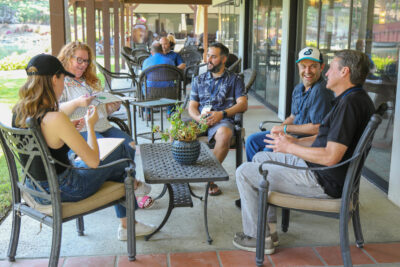
Review of “Secrets of a Secret Shopper”: Great Insights about Reaching First-Time Guests
In his new book, Greg Atkinson shares insights he has learned from serving as a secret shopper in some of the United States’ most dynamic churches
As a seminary student who worked full-time at a church in one of the most expensive markets in the United States, I had very little money to take my new wife out to dinner during our first year of marriage. I’ve always loved eating out, so this was a major bummer.
That’s how I first started serving as a secret shopper. We got to eat out at nice restaurants, and all we had to do was fill out a fairly simple survey about our experience. It was a win-win for everyone.
My own experience as a secret shopper for restaurants weighed upon my mind when I first spotted Greg Atkinson’s book Secrets of a Secret Shopper: Reaching and Keeping Church Guests.
The concept seemed fascinating. Churches all over the country—from congregations of 12 to megachurches—hire Atkinson to anonymously visit their churches to review what it’s like to be a first-time guest. The book describes some of the most significant insights he has gained from these experiences.
It touches on nearly every aspect of a first-time guest’s experience, from how a guest engages with a church’s website, to the parking lot, to the greeter ministry, to the worship service itself, and how a church follows up with guests. Atkinson explains:
“This book is about what I look for when I do a secret shopper visit for a church (regardless of church size). I’ve worked with small church plants, all the way to giga-churches of 20,000 attendees. I wrote this book to help you improve based on the practical tips and advice I give in these secret shopper consults, without me actually having to be there in person. I love helping churches reach more people and keep more people.”
Church leaders who want to reinvigorate their first impressions ministry will find Secrets of a Secret Shopper full of practical advice they can apply this week. You’ll also find stories from Atkinson’s numerous secret-shopper experiences that demonstrate how other churches make the most of first-time guest experiences. Atkinson writes:
“I want people to feel loved, welcomed, and wanted. I also want to remove any barriers or distractions that could keep guests from wanting to return and have a chance to hear the preaching of the gospel, or get plugged into a small group where they hear the good news.”
Noting that a guest typically encounters a church first through social media, second through its mobile website, and third through its standard website, Atkinson starts the book off with an insight about a church’s online presence, which he calls “the front door of the church”:
“In order to reach people far from God, we must think and act like missionaries. We must adapt to their culture and speak their language. Today’s spiritual seeker is visual and technologically savvy.”
Atkinson recommends you think about how guests’ arrival will make them feel in the first few minutes they’re on your campus. He urges church leaders to put themselves in the shoes of their guests and find out what they will see, smell, touch, and hear as they arrive.
He also suggests that churches put their best and brightest—the most positive, warmest personalities they have in their congregation—on their first impressions teams (parking attendants, greeters, ushers, etc.). These are not leftover spots for those who can’t cut it elsewhere. These are crucially important volunteer roles that require your church to invest seriously in their success.
The book provides a variety of insights into both a church’s music and its preaching. For example, it recommends keeping the decibel level close to 90, noting that he often checks this during secret shopper visits with an app on his phone.
During his secret shopper visits, Atkinson says he takes extensive notes and provides constructive feedback on sermons, including whether the preaching is engaging and leads to an intentional response.
But it’s what the pastor does after the sermon that may be the most critical:
“When I secret shop or visit a church, I always stick around after the service is over and see if I can find the senior pastor. I look to see if he is available, accessible, and interacting with people. This accessibility goes a long way toward making a good first impression for guests that may want to meet the pastor for the first time.”
Atkinson concluded the book by focusing on how churches follow-up with first-time guests, suggesting that churches provide “easy on-ramps” for people to assimilate into the broader church.
The book is full of practical suggestions on every step of the first impressions process, from attracting first-time guests to assimilating them into the life of the church. It’s a great book to read together (and discuss) as a church staff as you look to level up the guest experience in your church.





